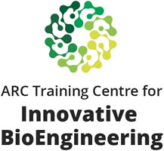
PROFESSOR
HALA ZREIQAT
Bsc (Hons) Jordan PhD UNSW
Radcliffe Fellow, 2016-2017
NHMRC Senior Research Fellow
Head: Biomaterials and Tissue Engineering
Research Unit
Founder and Chair of ADATE
Member of Bosch Institute
Visiting Professor at American University of
Beirut (AUB)
Professor AMME
2018 NSW Premier’s Award for Woman of the Year
Hala Zreiqat is a professor of biomedical engineering at the University of Sydney and both a National Health and Medical Research Council Senior Research Fellow (2016-2020) and Director of the Australian Research Training Centre for Innovative Bio-Enginering. Her research is on the development of novel engineered materials and 3D-printed platforms for regenerative medicine, particularly in orthopaedic, dental, and maxillofacial applications. She has established national and international industry collaborations to translate her discoveries into approved medical devices. Her pioneering development of innovative biomaterials for tissue regeneration has led to one awarded (US) and 7 provisional patents, and several collaborations with inter/national industry partners. She is the Founder and Chair of the Alliance for Design and Application in Tissue Engineering (ADATE), (2006-present). Founder of IDEAL Society (Inclusion, Diversity, Equity, Action Leadership) at Harvard University (October 2017-); member of the National Health and Medical Research Senior Research grant review panel and the Australian Research Council Expert College and German Research Foundation. She has been awarded more than $15. 0M in competitive funding. Prof. Zreiqat’s overall objective is to advance collaborative research ventures and build educational and industry linkages nationally and internationally in the field of musculoskeletal disorders and biomaterials research.
Research Highlight 1
Professor Hala Zreiqat has made significant contributions to the field of biomaterials and translational orthopaedic research, particularly in the development of innovative biomaterials for musculoskeletal regeneration.
A key contribution her team has made is in the development of biomaterial for regenerating large bone defects, which led to a global licensing agreement and a $1.6M grant from the NSW Medical Devices Fund for clinical translation.
Research Highlight 2
Developing a simple, sustainable and cost-effective strategy for optimising biomaterials by the controlled substitution of bioactive agents (strontium, zinc, zirconium) into calcium silicate ceramics, which enhances osseointegration and chemical and mechanical properties; and pioneering the development of technology to fabricate biomaterials into scaffolds that reproduce bone architecture and porosity.
RESULT
This work has led to several patents, as well as collaborations with industry partners to manufacture and commercialise the new biomaterials
Research Highlight 3
Despite the remarkable capacity of bone tissue to rejuvenate itself, repairing and regenerating large bone defects and non-union bone fractures remains a major clinical challenge. Accordingly, bone has become the second most transplanted tissue. There is a major medical need to develop new and effective approaches for repairing and regenerating large bone defects and non-union bone fractures. A challenge in regenerating large bone defects under load is to create scaffolds with large and interconnected pores while providing a compressive strength comparable to cortical bone. Development of a 3D printing technology to fabricate lightweight ceramic materials that are highly porous, highly interconnective and mechanically strong remained to be a challenge.
RESULT
The obtained strength is 150 times greater than values reported for polymeric and composite scaffolds and 5 times greater than reported values for ceramic and glass scaffolds at similar porosity. These scaffolds open avenues for treatment of load bearing bone defects in orthopaedic, dental and maxillofacial applications.
Research Highlight 4
Stem cell-based bone tissue engineering offers a promising approach for regenerating critical sized bone defects or repairing nonunion bone fracture. Understanding and recreating a signalling environment to control the differentiation of stem cells into the bone lineage would be of great importance. Her team have been mimicking the bone tissue micro environmental components, including a mineral phase, an organic phase, a cellular phase, and a soluble factor phase, for controlling the commitment of stem cells into osteogenic lineage cells for bone tissue regeneration.
RESULT
The studies have gained a deep insight of understanding of the vital roles of bone tissue microenvironments in controlling stem cell differentiation and trophic factor release; as a result, several feasible strategies of using smart biomaterials and pharmaceutical molecules to modulate stem cell fates have been identified. They were published in high-ranking journals in the field of regenerative medicine.

